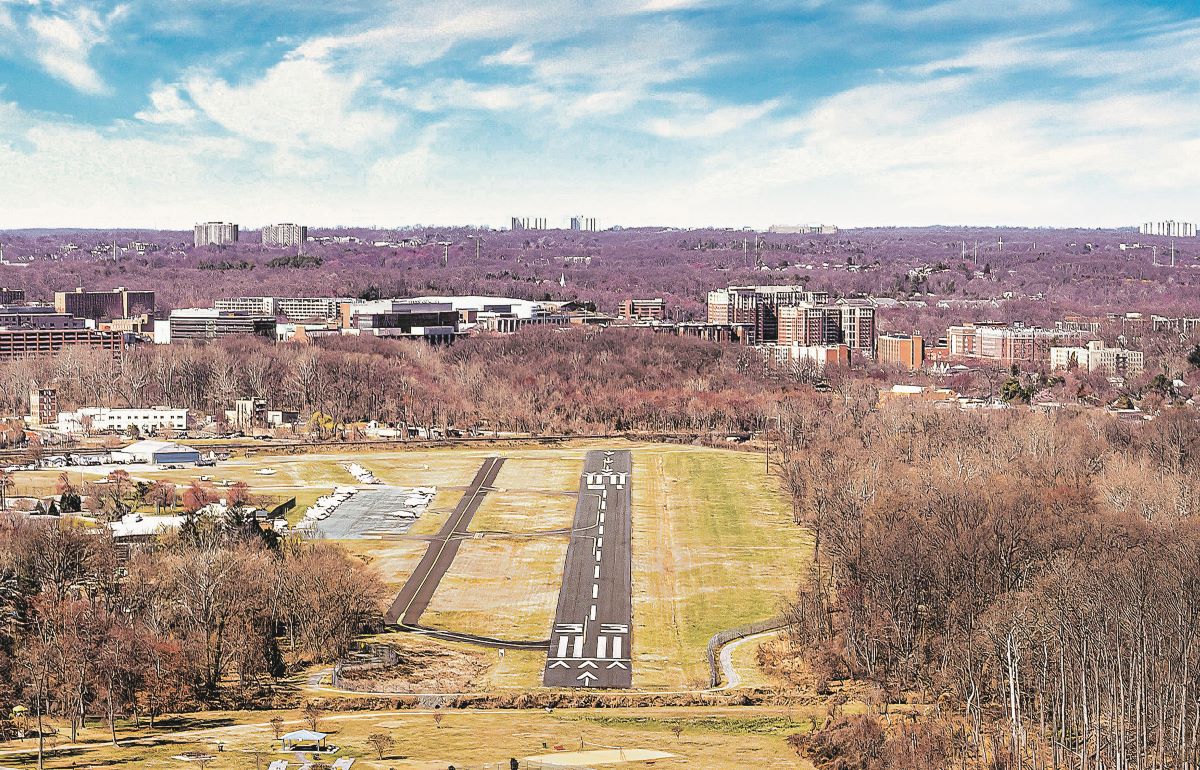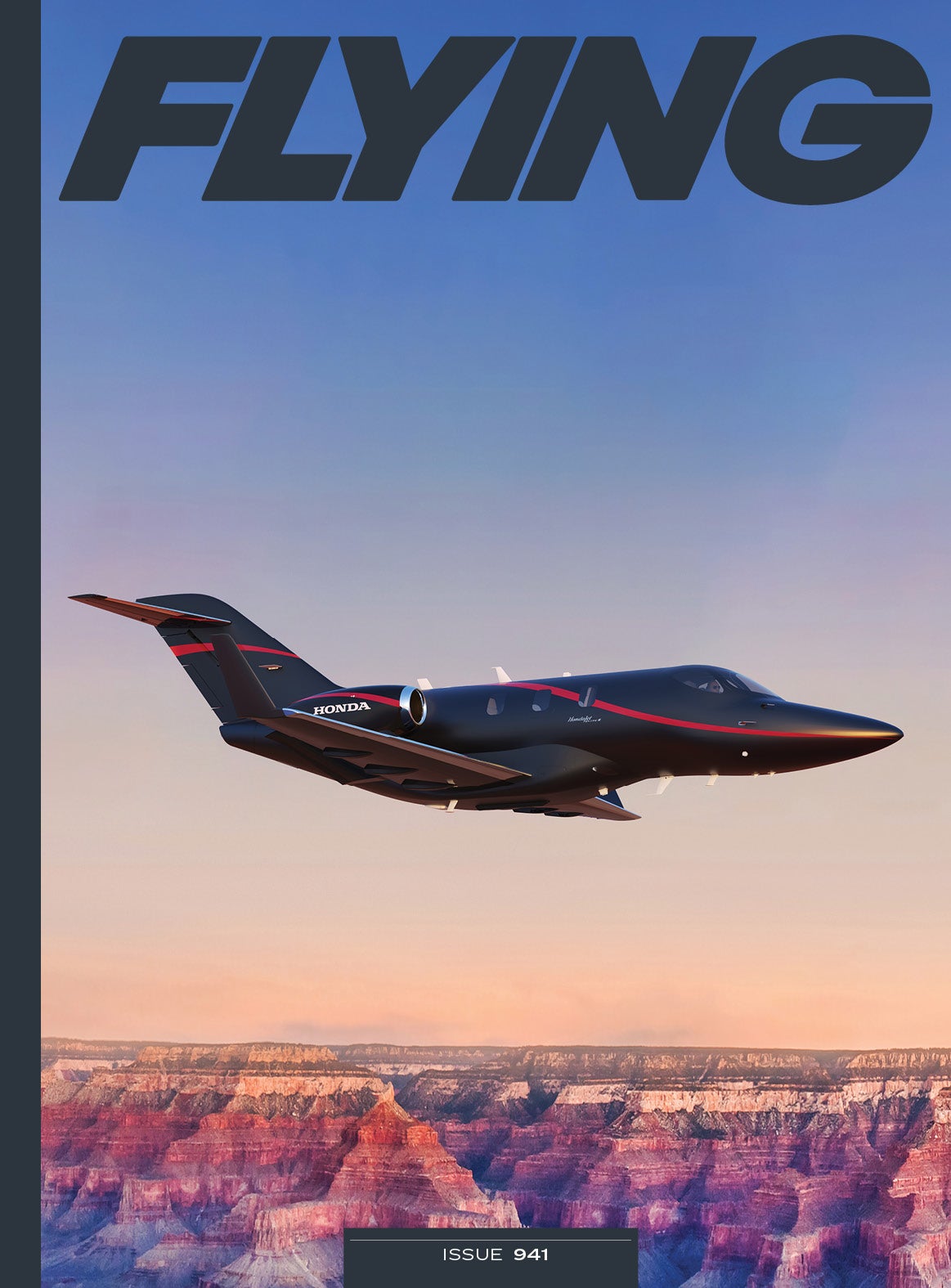After years of considering a springtime flight to Washington, D.C., I think I am finally ready to go. And let’s make it soon, because more so than usual, time is of the essence.
One of many attractions the nation’s capital is famous for is its spring cherry blossoms and a range of other beautiful blooms. And this year, reports from the Washington Post and Guardian newspapers—and even the groundhog Potomac Phil—indicate spring has arrived early this year.
If you’re not already a subscriber, what are you waiting for? Subscribe today to get the issue as soon as it is released in either Print or Digital formats.
I would like to catch the seasonal palette at its peak, but even if I miss the color splash, there is still so much to see in Washington that planning a GA flight and perhaps an overnight stay is easily worth the effort. The emphasis is on planning. The D.C. air space has its particular complexities, with several rules and procedures pilots must observe—and the consequences for violations range from warnings to certificate suspension. But there’s no reason to fear the area.
As long as you communicate properly with ATC and get the necessary permissions before entering controlled areas, you should be fine. The system is designed to keep you in the right place, so relax, talk to the controllers, and follow their instructions. They are trying to make your trip as safe as possible. Besides, I like to think there would not be more than a dozen GA airports within the Special Flight Rules Area—the DCSFRA—if we were not meant to fly there.
Not Like Old Times
Flying around D.C. this spring will mark nearly 35 years since the last time I flew there, while taking my first round of flight training after graduating from college in 1988. A longtime family friend, CFI, and FAA employee offered to give me a week’s worth of lessons as a graduation gift—one that seems more generous with every passing year. He intended to send me home with the hours and proficiency I needed to solo.
His flying club was based at Leesburg Executive Airport (KJYO), and we spent most of our time flying between Leesburg and Frederick Municipal Airport (KFDK) with regular stops at a few smaller fields, including Sky Bryce (VG18). One day, we were departing Leesburg, climbing at 80 knots or so, when I looked up through the Cessna 152’s scratch-worn windshield to see Concorde perhaps 2,000 feet above us. They operated from nearby Washington Dulles International Airport (KIAD) back then. It was climbing, too, at an impressive rate. Indeed, Concorde’s ascent was so steep that it eventually disappeared not into the distance ahead, but into a high overcast instead.

Leesburg and Frederick were not busy then, nor were they towered at the time as they are today. This was also decades before the SFRA and the Flight Restricted Zone, so other than staying clear of the Dulles section of the Class B airspace, navigating was clear.
Since September 11, 2001, the D.C. airspace has grown more complicated and even daunting to many GA pilots. Some simply avoid flying anywhere near the District, fearing missteps that could result in reprimands from ATC, interception, or worse. However, there are procedures for flying into skies around the Capital, and while they require additional planning and attention, they are not difficult to understand. Indeed, getting accustomed to its operations is worthwhile for pilots who would like to visit D.C.
Getting There
Flying into the Capital region can be much like your typical GA trip or something more challenging, depending on how close you wish to get to the center, which for pilots is the VOR/DME at Reagan Washington International Airport (KDCA). Around the center are roughly circular rings with radii of 60 and 30 nautical miles, and a more irregular boundary stretching about 15 nautical miles from the VOR. Think of theseas denoting increasing levels of difficulty. Pilots must complete an online course to fly VFR within the 60-mile radius.

The area between the 60- and 30-mile rings is easy. All pilots have to worry about is a speed limit of 230 knots indicated. The 30-mile ring marks the SFRA boundary. You need a SFRA flight plan on file, then radar contact and two-way communications to enter. The SFRA is also divided like a pizza, with the crust of each slice denoting a gate—each with a name from a local intersection—and you must include your planned entry and exit gates in the flight plan. When you file the plan, you will also receive a transponder code for the flight within the SFRA.
This may sound like a lot to remember, but once you are underway and talking with ATC, you mainly just need to fly and listen. For many pilots, entering the SFRA is worth the extra effort because there are several airports within it that offer easier access to Capital attractions through proximity to public transit. One note: often, you will be cleared into the SFRA but advised to stay clear of the Class B. This may put you below 1,500 feet msl in some sections.
The degree of difficulty rises if you want to enter the FRZ. There is paperwork for pilots, including background checks. Getting permission used to be difficult for pilots who have not been based at one of the three GA airports within the FRZ, known as the DC-3. These are College Park Airport (KCGS), Potomac Airfield (KVKX), and, up until recently, Washington Executive/Hyde Field (W32)—which closed permanently as of November 2022. However, that policy changed about 15 years ago, and now the process for getting what’s known as a PIN is straightforward and can typically be processed within a few weeks.

Once you’ve decided to go through the process, College Park probably is the most tempting, because it has a Metro station that makes getting to the city a breeze.
How you get into the D.C. area might ultimately depend on how ambitious you feel that particular day. There are certainly enough airports outside the SFRA that have rental car desks if you’re not feeling intrepid. But flying is a wonderful thing, and the closer you get toD.C., the more you’re going to be glad you are not driving.
Things To Do
The National Mall will always be my starting point for exploring the Capital. As a six-year-old, I played soccer and flew kites there while visiting cousins who lived in the city. Years later, during a memorable eighth-grade field trip, my classmates and I played ultimate frisbee and flew model airplanes across the street from the Smithsonian National Air and Space Museum, where we had purchased them in the gift shop.
The Air and Space Museum, a perennial magnet for pilots, reopened last October after a months long renovation. For those who have not visited lately, a visual experience that was largely unchanged since the museum opened in 1976 will be completely new, and even more of a must-see on the lists of aviation fans. Private pilots should feel particularly welcome in a new section devoted to general aviation.





The classic Washington points of interest still beckon, including the United States Capitol, Library of Congress, National Portrait Gallery, Washington Monument, Lincoln Memorial, Jefferson Memorial, Smithsonian National Museum of Natural History, National Museum of African American History and Culture, National Gallery of Art, Smithsonian National Zoological Park and the Vietnam Veterans Memorial, to name just a few.
Visitors have the option of numerous bus, van, and walking tours, including many that bundle attractions based on certain themes. These often make it possible to see more in a day than most people could orchestrate on their own. I find that distilling the itinerary to a short list is the best strategy, and walking is often the best way to get around. To speed things up and covermore ground, consider the Capital Bikes share program.
For me, the list is down to one destination: the Air and Space Museum’s Steven F. Udvar-Hazy Center, located near Dulles airport. I have somehow failed to visit the “new” museum for the last 20 years since it opened, and there are numerous aircraft there that I want to see up close.
Another aside: During the 1980s, my radio-controlled model airplane club organized a series of field trips to the Paul E. Garber Facility, the former center of restoration and preservation activity for the Air and Space Museum. You could book group tours of the workshops and storage buildings there, which were stuffed with all manner of aviation treasures. There were rare airplanes, of course, but also fabulous esoterica, like the enormous single wheel and tire from the original main landing gear of a B-36 bomber. Convair soon switched to a multi-wheel setup to better distribute the aircraft’s weight and avoid destroying runway pavement.
Today many of the aircraft I saw stashed in dusty corners or in pieces, like the German Arado Ar 234 twin-engine jet bomber from World War II, are restored and in the museum. The prospect of finally seeing this part of the collection had me considering what would be my first landing at a Class B airport: Dulles, mainly because one of the FBOs there runs a free shuttle to the museum, which is just outside the airport property.
Then a friend suggested Manassas Regional (KHEF),which is also close to the museum, has easy access to rental cars and a regional train station, with lower airport fees and less congestion.
I think I need to amend my flight plan.
This article was originally published in the April 2023, Issue 936 of FLYING.

